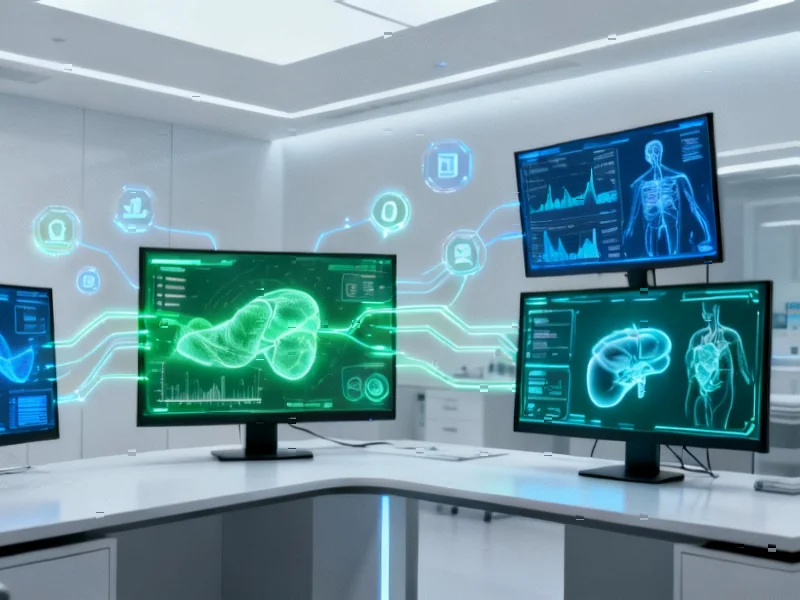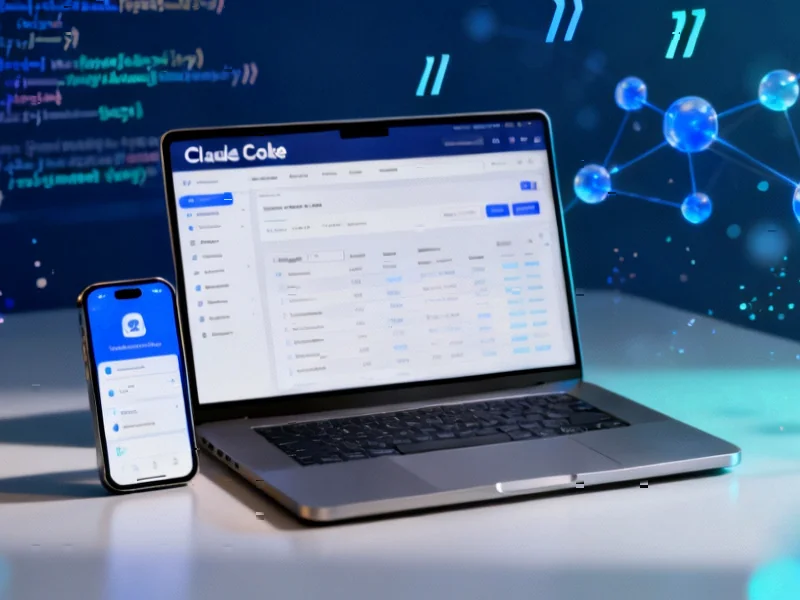According to Forbes, Google DeepMind is pioneering multi-agent AI systems that collaborate to solve complex medical challenges. In a recent TED talk, DeepMind’s Vivek Natarajan revealed that their AI team approach solved a decade-long antimicrobial resistance puzzle from Imperial College London in just two days. The system, building on Google Gemini 2.5’s “Deep Think” capability launched in August 2025, uses multiple AI agents that critique and refine each other’s ideas for days or weeks. Natarajan shared that their “Amy” AI clinician generated better diagnoses and more empathic care plans than human doctors, while the system has already helped identify a new drug-repurposing candidate for acute myeloid leukemia and discovered treatments for reversing liver damage. This represents a fundamental shift in how we approach both healthcare delivery and biomedical research.
Table of Contents
The Technical Architecture Behind Medical Multi-Agent Systems
What makes multi-agent systems fundamentally different from single-model artificial intelligence is their distributed problem-solving approach. Rather than relying on a single monolithic model, these systems deploy specialized agents with distinct capabilities – some might excel at pattern recognition in medical imaging, others at literature review, and still others at hypothesis generation. The magic happens in the interaction protocols between these agents, where they challenge each other’s assumptions and build upon partial solutions. This architecture mirrors how multi-agent systems in other domains achieve robustness through diversity of perspective and expertise.
Beyond Speed: The Clinical Practice Revolution
While the speed improvements are staggering – compressing decade-long research into days – the more profound impact may be in clinical diagnostics. The claim that AI can demonstrate superior empathy deserves careful examination. Unlike human doctors constrained by time pressures and cognitive biases, AI systems can maintain consistent attention across all patient interactions. However, we must distinguish between simulated empathy through language patterns and genuine compassionate care. The real breakthrough isn’t necessarily better bedside manner, but the elimination of diagnostic variability that plagues human medicine. When every patient receives the same thorough analytical process, healthcare outcomes become more predictable and equitable.
The Implementation Challenges Ahead
The transition from research breakthrough to clinical implementation faces significant hurdles. Regulatory frameworks like FDA approval processes weren’t designed for systems that evolve through continuous multi-agent interaction. There are also substantial computational resource requirements – running teams of AI agents for weeks demands infrastructure beyond most healthcare institutions’ current capabilities. Perhaps most challenging is the interpretability problem: when multiple agents contribute to a diagnosis or treatment recommendation, explaining the reasoning becomes exponentially more complex. This creates liability and trust issues that must be resolved before widespread adoption.
The Emerging Competitive Landscape
While DeepMind appears to be leading in medical applications, the broader multi-agent AI space is becoming increasingly competitive. Companies like OpenAI and Anthropic are developing their own approaches, though their focus has been more general-purpose. The specialized nature of medical AI creates both advantages and barriers to entry – the deep domain knowledge required means newcomers can’t simply repurpose general models. We’re likely to see specialization emerge, with different organizations dominating specific medical subfields based on their unique agent architectures and training methodologies.
The Philosophical Dimensions of AI Agency
These developments raise fundamental questions about the nature of agency in artificial systems. When multiple AI agents debate, critique, and build upon each other’s work, are we witnessing emergent intelligence or sophisticated pattern matching? The distinction matters for how we regulate and trust these systems. If the interactions between agents create genuinely novel insights rather than recombining existing knowledge, we may need new frameworks for understanding machine creativity and responsibility in medical contexts.
Realistic Outlook and Market Impact
While Natarajan’s vision of “healthcare at zero marginal cost” within a decade is ambitious, the near-term trajectory points toward hybrid human-AI clinical teams becoming standard within 3-5 years. The most immediate impact will likely be in diagnostic support and research acceleration rather than autonomous practice. The business model implications are profound – healthcare systems that successfully integrate these technologies could achieve significant cost advantages while delivering superior outcomes. However, we should expect a period of disruptive transition where traditional medical education and practice models struggle to adapt to these AI-augmented capabilities.



